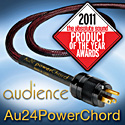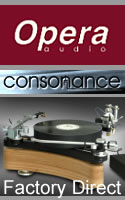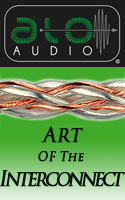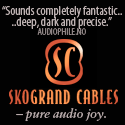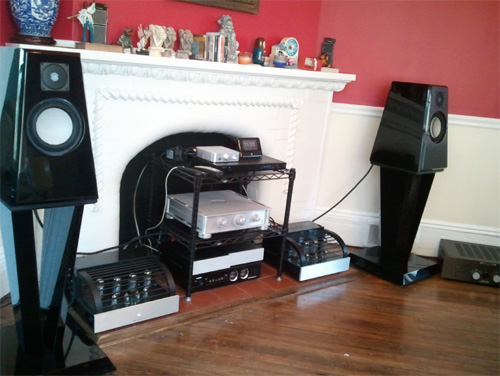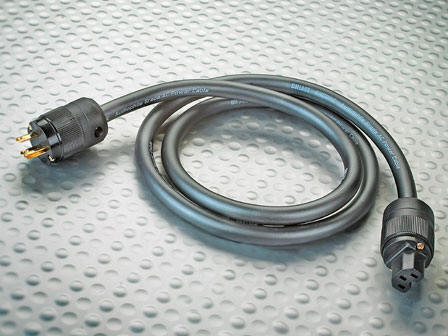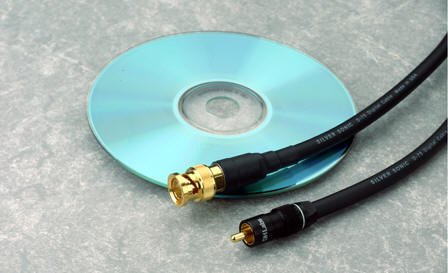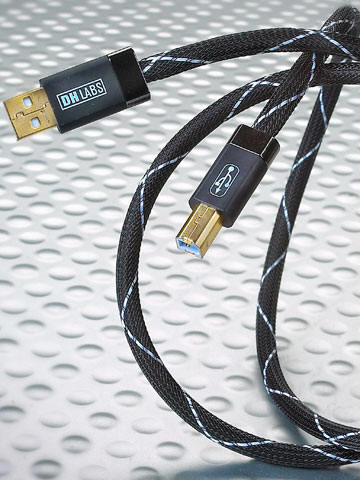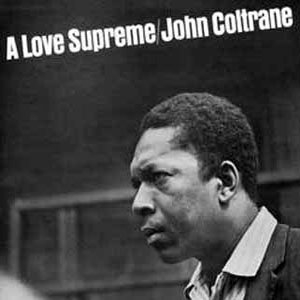|
|
You are reading the older HTML site
Positive Feedback ISSUE 59
dh labs Silver Sonic Cables - Air Matrix Interconnects, Q-10 Signature Speaker Cables, Encore Power Cords, and D-75 and USB Digital Cables as reviewed by Tom Lyle
Count I've lost count how many times I've heard someone say, "Cables don't make an improvement in the sound of a system because I tried a [brand x] interconnect hooked up between my CD player and my integrated amp, and I heard no difference". I'm a huge believer in system-wide assessment of audio cables. Even in the most modest of systems I've heard changes in the overall sound when auditioning a more sophisticated cable set-up—that is, a system-wide changing of all interconnects, speaker, and power cables from the same manufacturer. Yes, sometimes these changes aren't as positive or as huge as I would have expected. But never, I said never, have I heard no difference at all. It is with this in mind that I auditioned the relatively low-priced DH Labs Silver Sonic cables in my system. This system is my "second" system, located in a common space on the first floor of our home which is currently built around a pair of the amazing Talon Hawk 2 two-way stand-based monitor system powered by a pair of tubed PrimaLuna DiaLogue 6 monoblocks and controlled by either a tubed Balanced Audio Technologies (BAT) VK-3i or solid-state Edge G2 preamplifier. The source components are digital—an Oppo universal player with its digital output connected to a Benchmark DAC1PRE, and a Squeezebox Touch reading FLAC files from the Wi-Fi with its digital output also connected to the Benchmark. Also, for a short time, the system was fed by an Audioengine wireless digital system that is has a resolution of 24/96. This stereo is not state-of-the-art, but I don't know anyone who would call it entry level. And though certainly not as lofty as my main system upstairs, it is quite listenable, to say the least, and a near perfect system for testing the lines of DH Labs Silver Sonic cables I was sent to for review.
I wasn't sure of the exact prices of the DH Labs Silver Sonics prior to their installation, but I did know that they were not expensive cables. Still, I was mighty impressed by their performance, and would have been just as impressed if I learned that the DH Labs were charging more for their products than they actually do. I'm aware everything is relative, so compared to the wires that are in my upstairs "reference" system, these cables cost a mere pittance. But like I said, everything is relative. At $255 for a pair of 1 meter Air Matrix interconnects, they are much less expensive than the "average" high-end interconnects. The six-foot run of Q-10 Signature speaker cables don't cost much more than the interconnects, and the Encore power cords are also similarly priced. After adding the D-75 digital coax and USB cable, the total cost for the entire package cost as much as an "affordable" component, which makes sense. Line The Air Matrix are the second from the top of the DH Labs Silver Sonic interconnect line. This cable uses a DH Labs' proprietary dielectric material which is made mostly of air. DH Labs claims that this is very close to the ultimate in dielectric—which is no dielectric at all. They go on to say that this dielectric material provides "open, clear, and transparent sound, and greatly improves the soundstage detail, depth, and dynamics". Since it is fully shielded and has a low capacitance, it is ideal for systems that require a long run of cable. The Air Matrix has custom machined pure copper RCAs—practically unheard of at this price point—and is also available with OFC/Gold XLR connectors.
DH Labs offers three types of speaker cables, where the Q-10 Signature occupies the middle position, which replaces their Q-10 (sans Signature). It contains DH Labs' proprietary treated silver-coated "Continuous Crystal" copper that has an oxygen content of only seven parts per million. It has a four conductor "multiple gauge array" that DH Labs says uses advanced winding geometries to enhance the overall performance; especially a system's transparency by controlling magnetic fields that interfere with the audio signal. The conductors are constructed with an "ultra-smooth" surface which they say, along with the pure PTFE Teflon dielectric extruded in a precise, pressurized extrusion process, ensures the highest possible sound quality. The electrical and physical properties of PTFE are an ideal dielectric material for speaker cables. The made in the USA, military spec Q-10 Signature has a combination of two 12-gauge and two 14-gauge conductors (this corresponds to a 10-gauge cable) which allows the cable to be user friendly by being far more flexible than other comparatively gauged speaker cables. Although I received a single run of the Q-10 Signature speaker cable, it is also available as an internal bi-wire (both cables bound in the same sheath) or as an external, standard bi-wire. DH Labs claims that this cable has "impressive imaging and completely neutral tonal balance". I was very impressed by the appearance of the Encore power cords, so much so that I find it difficult to believe that the Encore is DH Labs Sliver Sonic's lowest priced power cable. The diameter of the cable can be likened to a small garden hose, yet was flexible enough to be easily routed to each component's EIC input, my power conditioner's inputs or the wall receptacle, with no problem whatsoever. The charcoal gray Encore is a shielded 15 amp power cable with three "high-purity" 14AWG stranded OFHC copper conductors. Its shielding is purported to have excellent noise rejection.
The D-75 digital cable is a 75 Ohm cable with RCA or BNC connectors. The '75 has solid silver-coated center conductors in order to minimize signal reflections, and maintain uniform impedance. This center conductor is encased in a closed cell-foam Teflon dielectric which boasts a very low dielectric constant. Noise rejection is maintained by a two-layer shield: an aluminum Mylar shield and a heavy braid to keep ground resistance as low as possible. DH Labs says that the braid is wound with carefully controlled tension in order to minimize a phenomenon called "VSWR spikes", which they claim is a common cause of signal reflections in high frequency cables. Besides offering termination with coax RCAs, the D-75 is also available with 75 Ohm BNC connectors.
The DH Labs Silver Sonic USB cable has silver-coated OFHC copper conductors, and is insulated with a low-density gas-injected dielectric. This combination is said to provide a more uniform attenuation vs. frequency curve, which helps to preserve waveform shapes at the Megahertz frequencies where digital cables operate. DH Labs says that at these high frequencies uniform insulation thickness is very important. To help ensure machining precision, they twist the conductors of the cable very slowly with a constant tension. Their techniques, as in the D-75 coax, maintain a "highly uniform characteristic impedance, which minimizes signal reflections [and thus cable jitter]." Because at the high digital frequencies cables act as wave guides, dimensional discontinuities such as inconsistencies in insulation thickness or non-uniform spacing between the conductors are what separate the good from the bad in digital cable design and manufacture. As with the D-75, the shield is also wrapped at a constant tension to avoid "VSWR spikes". DH Labs offers their USB cable in up to five-meter lengths.
Reveled Installing the various DH Labs Silver Sonic cables into my system revealed that these cables' level of performance was far beyond what their affordable price would indicate. I'm not one to advocate using component-like audiophile-isms to describe their sound, and I wouldn't dare do that to even the most expensive cables on the market. Why? Because a cable is only going to be as good as the equipment it is connected to, that is to say, in theory if the cable is the best that is available it will pass the signal to the next component totally unharmed, and in theory behave as if no cable exists. Total transparency is the goal. A cable should never be used to "fix" a component's or a system's sound. Yes, there is some system matching that is going to occur, only because no cable is perfect so each type of cable is going to come with a set of sonic compromises, and this will determine its sonic personality. In the case of the DH Labs cables, their designers seem to have wisely concentrated their efforts on the midrange, and as far as an affordable set of cables go that is certainly an honorable path. One would assume that affordable cables are most likely going to be used in affordable systems, so to forgo a degree of refinement in the frequency extremes is far more preferable than to mess with the midrange. And I guess it is fair to say that this is preferable in all cables (as it is preferable in all pieces of audio gear, but I'm not going to go into that now), as the midrange frequencies are where the bulk of the musical information is located. Since I used this cable in a system that is so wonderful in its reproduction in the midrange frequencies, it seemed a near perfect fit for the DH Labs Silver Sonic cables. As a quick aside, I should mention to all those who dream of being audio equipment reviewers: be careful what you wish for. Yes, it is nice to have different pieces of equipment to listen to, but performing a proper cable review is not, to coin a phrase, a walk in the park. Disconnecting all the reference interconnects, speaker and power cable, then installing the review cables, and sometimes switching it all out again for a "generic" cable, switching back again to the reference, back again to the review set, lather, rinse, repeat. I wanted to be double plus sure I was hearing what I was hearing—to make sure I was not just another victim of "different is better", but cable reviews are very tiring. Another point I need to make regarding the DH Labs Silver Sonic cables, and in reality, every other cable on the planet that strays from perfection, that is, a cable that behaves less than the ideal of no cable at all—is its characteristics must be described in the ways in which it falls short of total transparency. That's it. With that in mind, after living with the DH Labs for quite a while, as I mentioned earlier, it was apparent that the midrange was the highlight of the "sound" of the various DH Labs Silver Sonic cables sent for review. Of the bunch, though, I'd have to admit that the Encore power cables impressed me the most because of the high level of performance relative to their affordable price. I had previously been using these ridiculously low priced Encore cables throughout, connecting a Panamax power conditioner to the wall receptacle, and all the power outlets from each component to the Panamax. With or without using the other DH Labs cables, the Encores seemed to excel in almost the same ways that I thought the Air Matrix interconnects and Q-10 Signature speaker cable improved upon the sound of the system vs. generic cables, but more so.
Needless to say, the midrange response of the DH Labs Silver Sonic cables depended on excellent source material. Cliché as it might seem, the 24/96 version of John Coltrane's Love Supreme downloaded from HDTracks.com ended up being played through the Talons more than a few times during the DH Labs' tenure. It was easy to be distracted by the genius of Mr. Coltrane and his cohorts, but let's take the time to be thankful for this type of problem. The entire four-part musical journey passed by each time I played it in what seemed to be the blink of an eye, and called for repeated listening, not only because of the short length of time that passed (the entire album lasts only slightly more than half-an-hour), but because of the concentration that Coltrane's brilliant, concise composition, melodies and varied tonal structures demand. After many weeks, I have to admit that using these entry-level cables in a system of this caliber might not have been a perfect match other than for reviewing purposes. Why? Because of the revealing nature of the speakers I was able to hear the cables' shortcomings; as minor as they might they might have been. This included a bit of thickness in the lower mids that resulted in Coltrane's horn sounding a bit "confused" in this all important midrange region when compared to my reference cables. The treble of the Hawk 2 loudspeakers is especially noteworthy, and although the highest of the high frequencies are not the strongest suit of the DH Labs Silver Sonic cables, the treble was not negatively affected per se. Why was that? Cymbals still had the requisite sizzle, vocal sibilance was still very natural sounding, and hall ambiance and reverb trails still decayed into blackness. Even though there weren't huge improvements in this nether-region when using the DH Labs cable vs. generic, "do no harm" is far wiser than trying to overstep one's bounds. I'd rather these frequencies be slightly rolled off than a grainy mess, and the DH Labs were definitely the former, and even then only slightly missing the mark on these very highest frequencies. Nevertheless, the DH Labs Silver Sonic cables' strengths lie in the midrange, and throughout the review period that became more apparent as I played more material. I hope one puts any negative criticisms of these cables into perspective. When using the Talon speakers in the system they were very revealing. If these rather expensive speakers were to become permanent in this system, one of the first things I would do is upgrade the speaker cables to a set that performed even better than my current reference. When using the not nearly as analytical, nearly one-tenth as expensive Dynaudio speakers that I often use in this system, the performance of every DH Labs Silver Sonics cable in the chain was more than respectable, and again proved that these cables perform at a level that is far better than their prices would indicate. And one more thing: those who say no differences can be heard between different USB cables should give a listen to DH Labs' very affordable USB cable. All categories of sound were improved—frequency extremes, midrange clarity, soundstage, apparent volume, etc. etc. I admit not enough time has passed in this growing field for me to have listened to a huge number of different brands of USB cables, but one is not likely to hear much better for this price (I highly recommend reading Tom Gibbs review of this cable in issue 59). If one compares the price of the Silver Sonic USB at $70/meter to a generic on-line offering, sure, the DH Labs USB might seem a bit pricey, but there is no question that compared to other audiophile cables it is a bargain. Go for it. Familiar DH Labs Silver Sonics might not have the cache or recognition of other more familiar brands of cables on the market (perhaps due to their smaller advertising presence), but it is not because they don't make a great cable. When judged on performance criteria alone, in some systems DH Labs Silver Sonics should be considered alongside the big boys of cable-dom when assembling a modest system. Of course there are going to be some differences between the sound of different brands used in different systems (there will always be differences), but still, a system owner could get very similar sonic results and also save some big money, rather than subsidizing the advertising budgets of the larger companies. In the right system, you can't go wrong. Tom Lyle
Air Matrix
interconnects
Q-10 Signature
speaker cables
Encore power
cords
D-75 digital
cable
USB digital
cable
DH Labs
|
